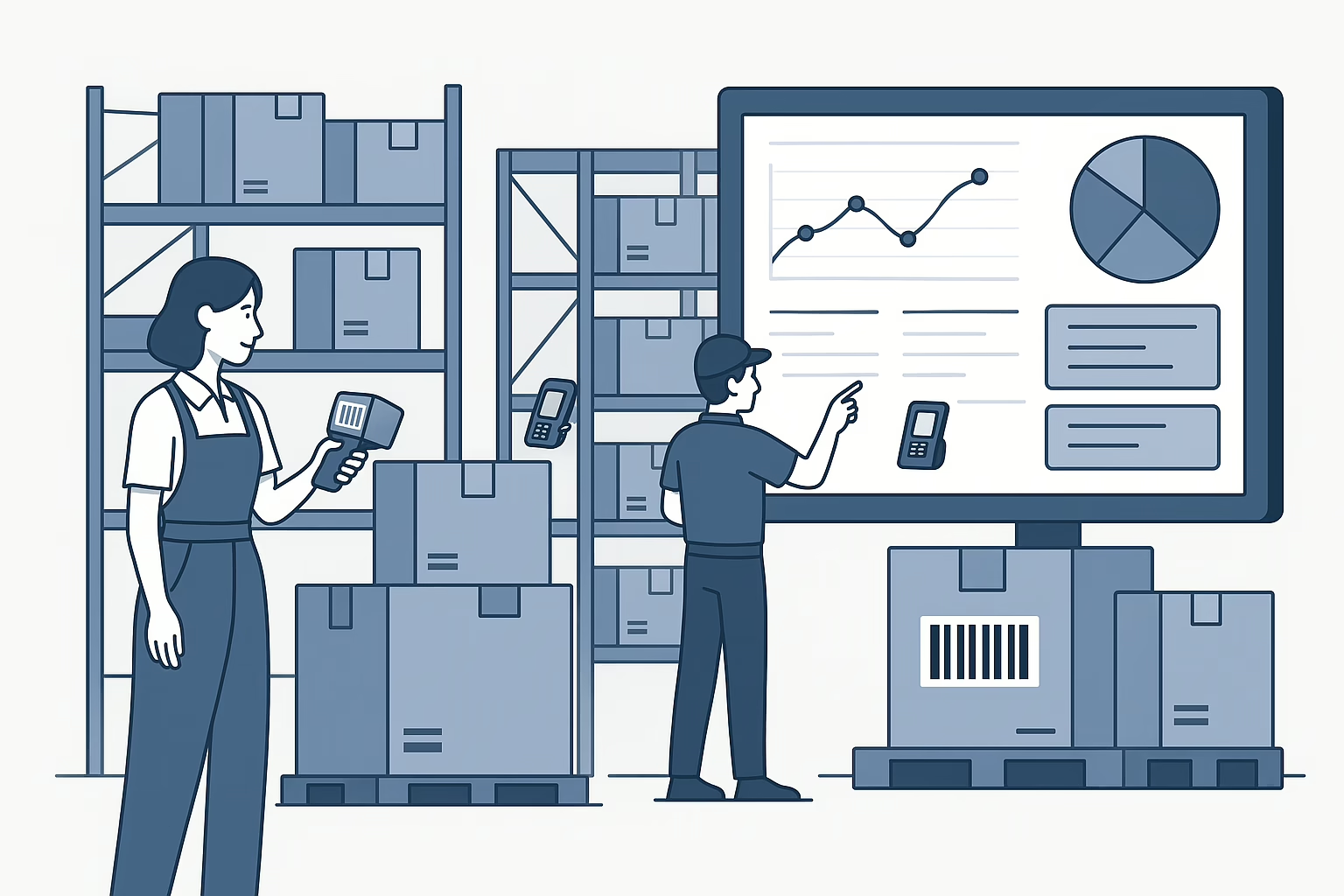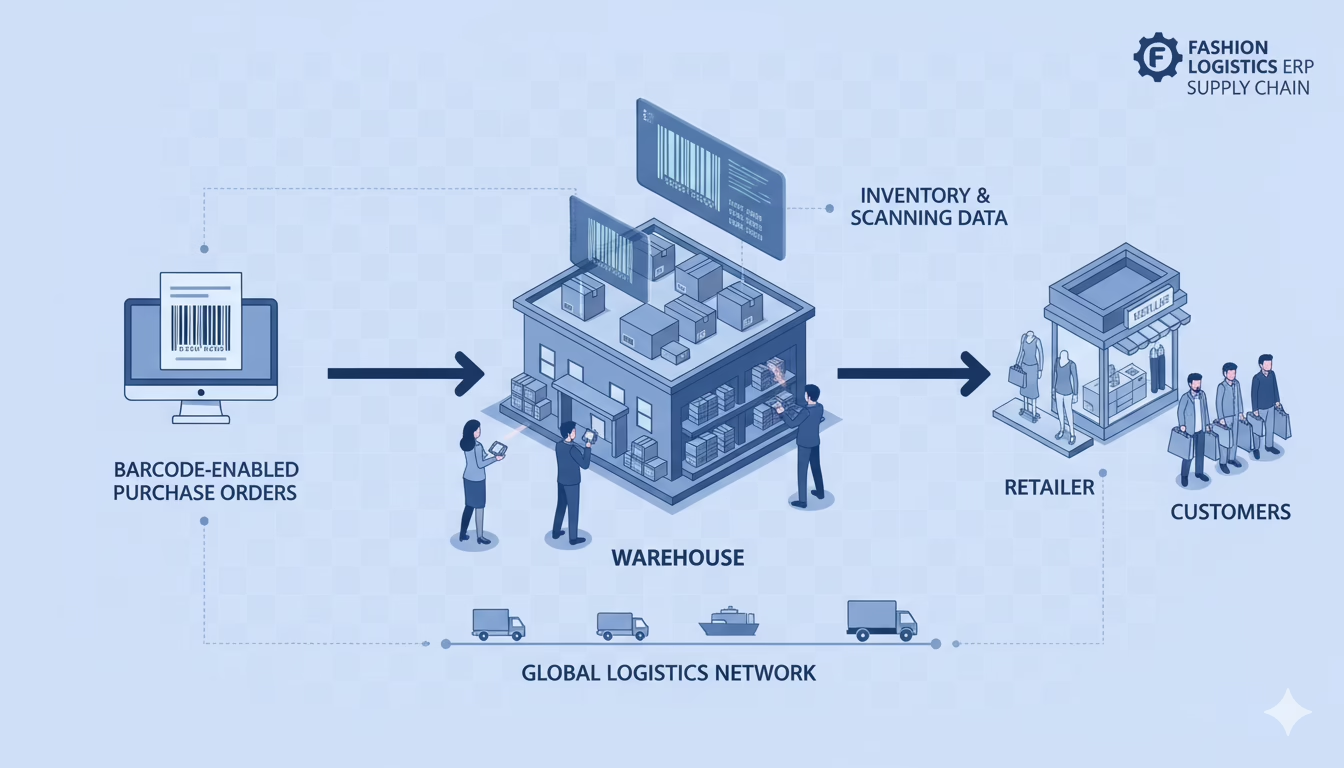
How can a mid-market fashion brand prevent double-selling inventory, keep purchase orders flowing, and transform stock into reliable revenue? The answer lies in wholesale distribution software. This technology provides real-time, multi-channel inventory synchronization, smart allocation logic, and the ability to release partial orders. It coordinates returns and delivers on-demand business intelligence, enabling brands to sell across both wholesale and direct channels without sacrificing margins or wasting time on manual work.
This article explores five key priorities for evaluating wholesale distribution software. It clarifies when commerce-focused distribution tools are superior to a traditional Warehouse Management System (WMS) and shows how dedicated solutions fill a crucial gap for mid-market brands with the specific integrations and workflows they need. Let’s examine the features and decisions that turn operational complexity into a scalable advantage.
Key Takeaways: Mastering B2B Inventory
Wholesale distribution software is the practical solution for mid-market fashion and apparel brands managing complex B2B inventory across multiple channels. The five takeaways below outline what to prioritize when evaluating options, compare distribution software against a WMS, and highlight the value of a targeted solution.
- Eliminate Oversells with a Single Source of Truth: Unify your inventory across B2B and B2C channels with real-time sync, allocation logic, partial order releases, and coordinated returns. This prevents selling the same item twice.
- Choose Distribution Software for Commerce Logic: A WMS excels at in-warehouse tasks. Wholesale distribution software is built for purchase order orchestration, wholesale portals, channel-specific rules, and managing the entire order lifecycle.
- Prioritize Commerce-Critical Integrations: Focus on seamless connectivity with Shopify, QuickBooks, ShipStation, EDI/3PL providers, and key wholesale marketplaces like Joor, NuOrder, and Brandboom. This eliminates manual data entry and fulfillment gaps.
- Leverage On-Demand BI as Your ROI Engine: Use real-time dashboards to track KPIs and forecast demand. This reduces stockouts and overstock, shortens cash cycles, and justifies pricing with measurable service improvements.
- Find Your Fit in the Mid-Market: Many ERP and WMS suites are built for giant corporations. Mid-market fashion brands need affordable, easy-to-integrate solutions that handle partial releases, returns, and provide actionable data.
Problems Solved by Wholesale Distribution Software
Apparel brands constantly face stock imbalances. Frequent stockouts and overstocks eat away at margins, while chargebacks and endless spreadsheets amplify the losses. Imagine a Black Friday sales spike on your direct-to-consumer site that violates your wholesale service level agreements (SLAs), triggering costly penalties. This scenario creates channel chaos, erodes partner trust, and slows down cash flow. You need a commerce-first system that stops these issues and delivers a rapid return on investment.
What Is Wholesale Distribution Software?
Wholesale distribution software is a system that orchestrates inventory, orders, allocations, and returns across both wholesale and direct-to-consumer channels. It syncs product availability between wholesale portals, Shopify stores, marketplaces, and 3PLs. It also manages purchase orders, pricing tiers, and automates invoicing, creating a single source of truth that prevents overselling and accelerates revenue.
How It Differs from WMS and ERP
- Wholesale Distribution Software vs. WMS: A Warehouse Management System (WMS) is designed to boost warehouse productivity, like picking and packing accuracy. It focuses on physical execution inside the warehouse walls. In contrast, wholesale distribution software manages the commercial logic that governs how and where inventory is sold.
- Wholesale Distribution Software vs. ERP: An Enterprise Resource Planning (ERP) system is the financial and master data backbone of a company. However, ERP projects can be long and expensive, often requiring heavy customization. Distribution software provides the speed and channel-specific rules a mid-market brand needs without the complexity of a massive ERP overhaul.

Stop Oversells with a Single Source of Truth
Wholesale distribution software prevents overselling by unifying inventory, reserving stock for key accounts, applying safety stock rules, and updating availability across channels in near real time. Partial order releases allow you to ship what’s ready now while automatically backordering the rest, protecting your SLAs and margins.
- Real-Time Sync: Inventory and order data are synchronized across all your sales channels almost instantly. The availability shown to customers reflects what is actually in stock.
- Allocation Logic: You can reserve specific SKUs or sizes for major wholesale accounts. This allows you to set channel priorities and apply safety stock to avoid stockouts during promotions.
- Partial Order Releases: Ship the items that are available now and automatically place the rest on backorder. This keeps cash flowing and satisfies customer expectations without canceling entire orders.
- Coordinated Returns: Automatically restock returned items (RMAs) to your available inventory and trigger immediate reallocation. Combining partial releases with instant RMA restocks can significantly lift fill rates and reduce cancellations.
Commerce-First Workflows: From PO to Cash
The right software automates the entire journey from purchase order to payment, turning manual tasks into efficient, repeatable processes.
- PO Orchestration: Automate pre-books, vendor POs, and the reception of Advance Shipping Notices (ASNs). Your finance team gains visibility into committed stock long before it arrives.
- Wholesale Portals and Rules: Publish unique price tiers, payment terms, and order minimums to your wholesale portals. Incoming orders can be tied to your allocation rules automatically.
- Order Lifecycle Management: Route orders to the correct 3PL, manage partial releases, and generate credit memos and invoices without manual intervention.
- Returns and Exchanges: Automate the creation of RMAs and restock items into the appropriate allocation buckets. This closes the loop on credit memos and preserves your margins.
Integrations That Preserve Financial and Commerce Flow
Your distribution software is only as good as its connections. Prioritize systems with strong, event-driven integrations for Shopify, QuickBooks, ShipStation (and other 3PLs), Joor, NuOrder, Brandboom, and returns platforms like Loop. Bi-directional syncs eliminate the need for manual reconciliation and prevent finance and operations from drifting apart.
When evaluating integrations, understand the difference between methods:
- Polling: Updates occur every few minutes or hours. This latency can lead to reconciliation issues and higher operational costs.
- Event-Driven: Updates happen in seconds. This method provides low latency, includes error retries, and lowers operational costs.
- Batch EDI: Data is sent in batches every few hours or days. It’s stable for large documents but can be costly to map and maintain.
For a mid-market brand, event-driven, bi-directional syncs with built-in retries are the gold standard.
On-Demand BI and Forecasting: The ROI Engine
Data is the engine of profitability. Your software should provide clear, actionable insights that drive better business decisions.
- Dashboards and KPIs: Get a real-time view of your fill rate, on-time in-full (OTIF) delivery, sell-through rates, aging inventory, and gross margin return on investment (GMROII).
- Forecasting: Use channel-specific demand signals to adjust your reorder points and safety stock levels.
- Service and Margin Gains: Operational visibility translates directly into fewer stockouts and smarter purchasing. Many organizations improve their fill rate by 5–10% and cut cancellations in double digits after implementing new rules and partial releases.
- Executive Reporting: Automated buyer packs and cash conversion cycle reports provide high-level snapshots that connect operational improvements to financial outcomes.
WMS vs. Wholesale Distribution Software: Which Is Right for You?
A WMS optimizes warehouse execution like picking, putaway, and RF scanning. Wholesale distribution software governs the commerce logic, including inventory sync, allocations, channel rules, and the order lifecycle. Use a WMS for physical movement; use distribution software to coordinate inventory and orders across all channels.
When a WMS is the right fit: Your primary needs are optimizing large warehouses, complex kitting, or high-volume RF scanning.
When distribution software should lead: Your biggest challenges are managing channel rules, pre-books, partial releases, and multi-channel inventory synchronization.
A popular hybrid approach uses distribution software for commerce logic while letting a WMS handle warehouse execution. This puts commerce first and physical execution second.
Pricing, Deployment, and ROI for Mid-Market Brands
Mid-market SaaS solutions typically range from hundreds to a few thousand dollars per month, offering a predictable cost structure. In contrast, custom ERP projects can quickly become expensive and time-consuming.
A phased rollout over 6–10 weeks is a realistic timeline for core channels. The most common mistake is rushing through the migration of product and vendor data. Take the time to clean up SKUs, size runs, and cost mappings first. Success depends on clear data and well-defined standard operating procedures (SOPs).
Final Thoughts
Fashion brands wrestling with stock imbalances and fragmented sales channels need a commerce-first distribution system. This software should enforce allocation rules, prevent oversells, and convert operational data into cash. Wholesale distribution software centralizes everything from POs and allocations to partial releases and returns, delivering faster invoicing and higher fill rates without a massive ERP project. Successful implementations prioritize clean data, phased go-lives, and role-based training, enabling mid-market teams to see a return on their investment in months, not years.